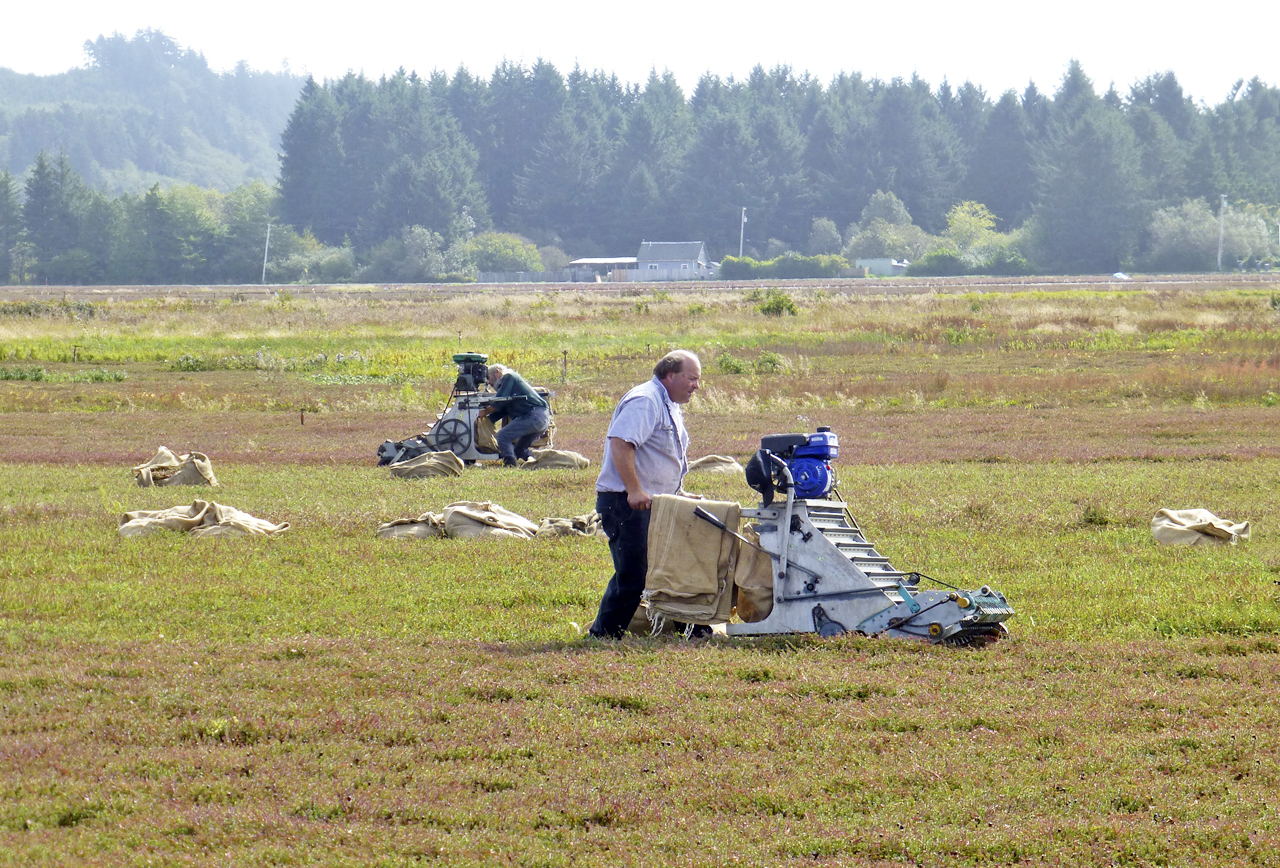The fall harvest is in full swing on South Beach cranberry bogs. Some growers started picking for the early fresh fruit market more than a week ago, with the majority beginning to pick in earnest this week. Harvesting is expected to continue through this month.
Local cranberry farms straddle the Grays Harbor and Pacific county line, running from SR105 to the clay banks to the east.
According to the U.S. Department of Agriculture (USDA), the industry is expected to have an overall better than average year, with Washington farmers looking at a slightly lower yield than last year.
Predictions by state
Washington, where the major concentration of bogs are in Grayland/North Cove and on the Long Beach Peninsula, is projected to produce 194,000 barrels. Of that total, the South Beach generally averages twice as many berries picked as Long Beach. Last year’s state production was 198,000 barrels, up significantly from 156,000 in 2014.
Wisconsin harvests the lion’s share of the country’s cranberry crop. It is predicted to produce 5.21 million barrels this season, topping last year’s 4.86 million, thus bumping up the average. A barrel holds 100 pounds.
The remaining four states are predicted to harvest a bit less than last season. The second largest growing state is Massachusetts, predicted to produce 2.07 million barrels, down from 2.35. New Jersey’s prediction is for 588,000 barrels (down 13,000) with Oregon’s crop close behind, expected to be about 530,000 barrels (down 32,000).
Double-edged sword
While a healthy harvest is welcome news, it’s also a double-edged sword given current market conditions. The USDA reports that bumper crops the last few seasons — including 2013’s record high 8.95 million barrels — have created a continuing cranberry surplus and, if USDA yield predictions hold true, this year will be no exception.
Less demand than product — pegged at about 90 percent currently — drives down prices. In 2014, growers received an average price of $30.90 per barrel. Last year saw a small uptick of about 70 cents per barrel. However, those prices are well below historic averages, while growing costs continue to rise.



